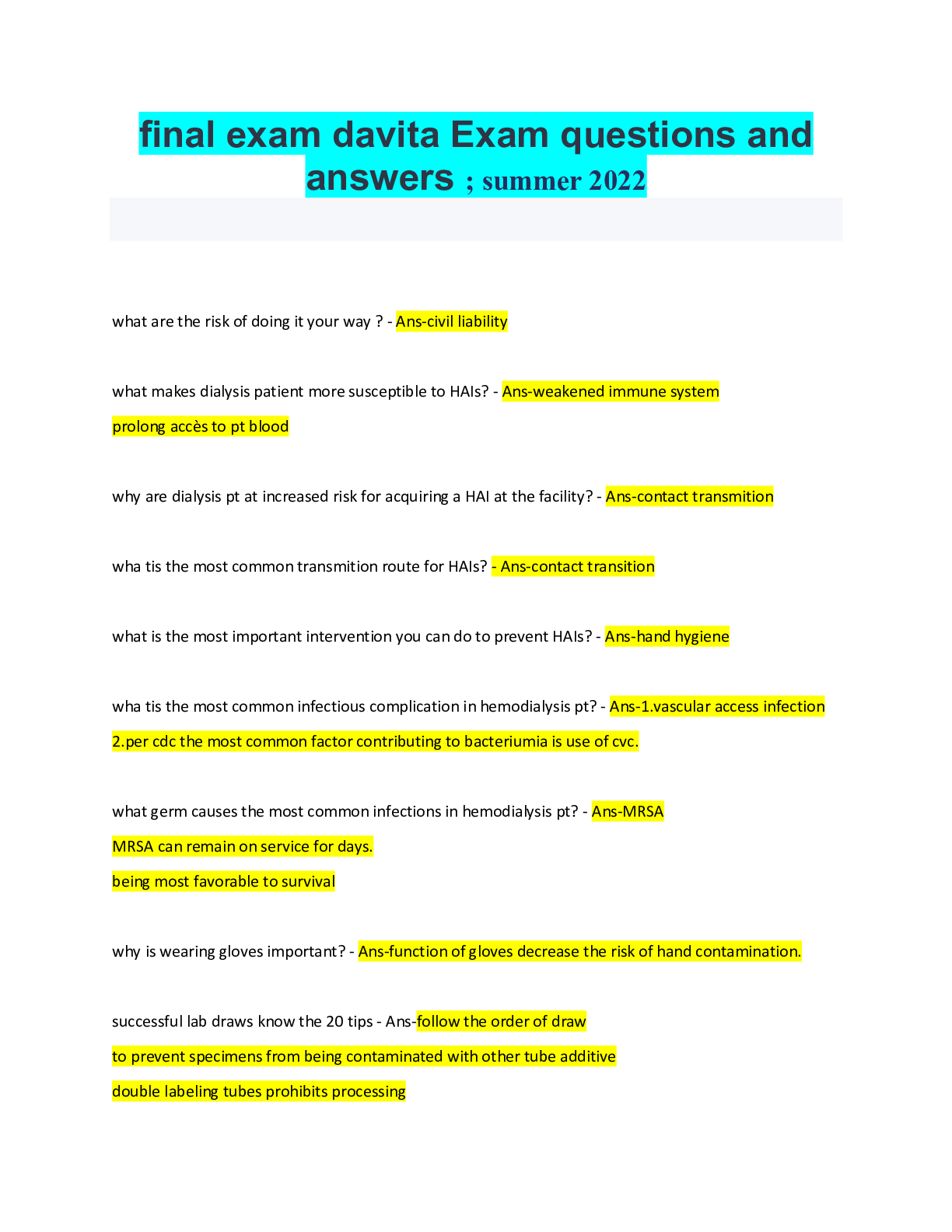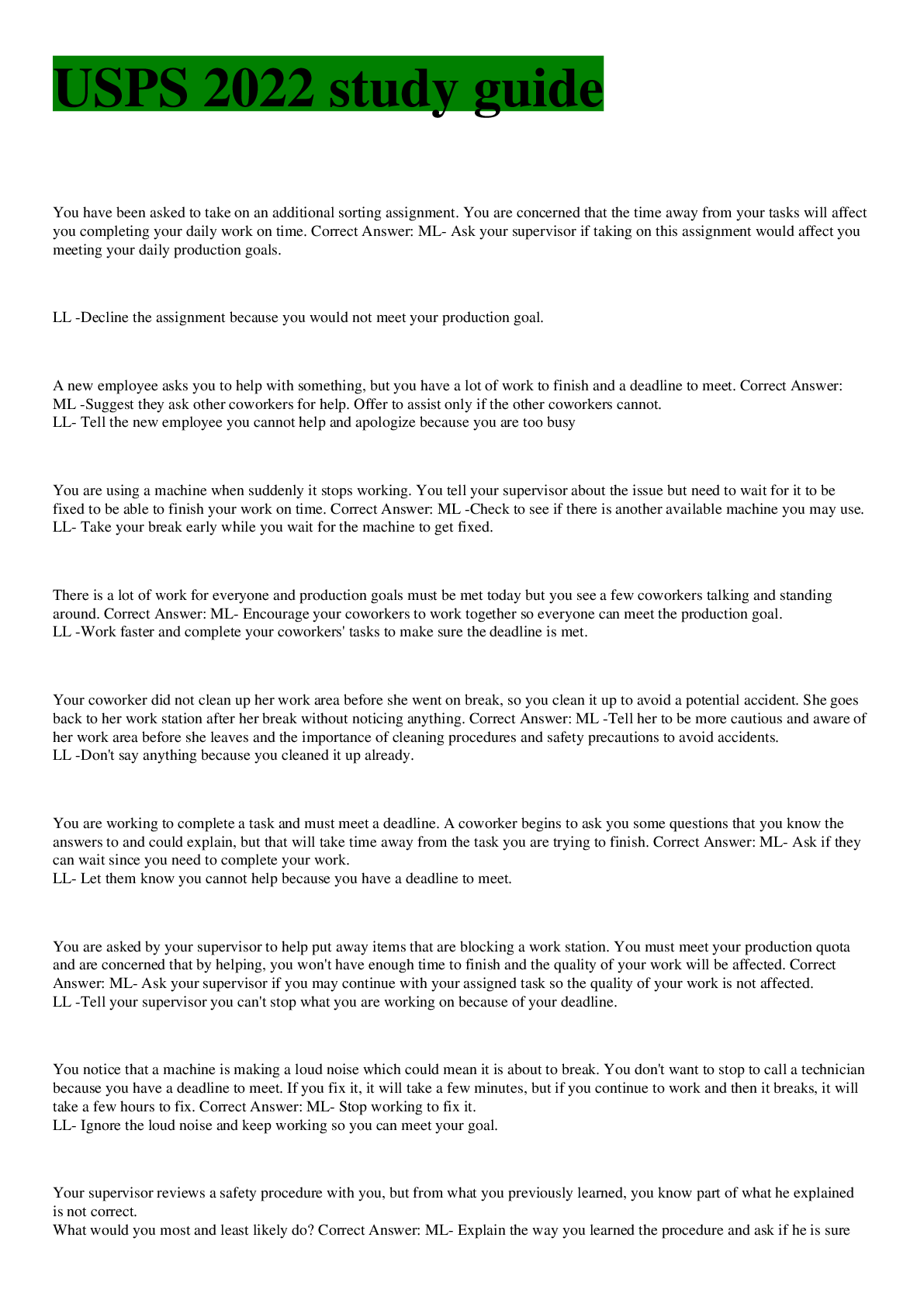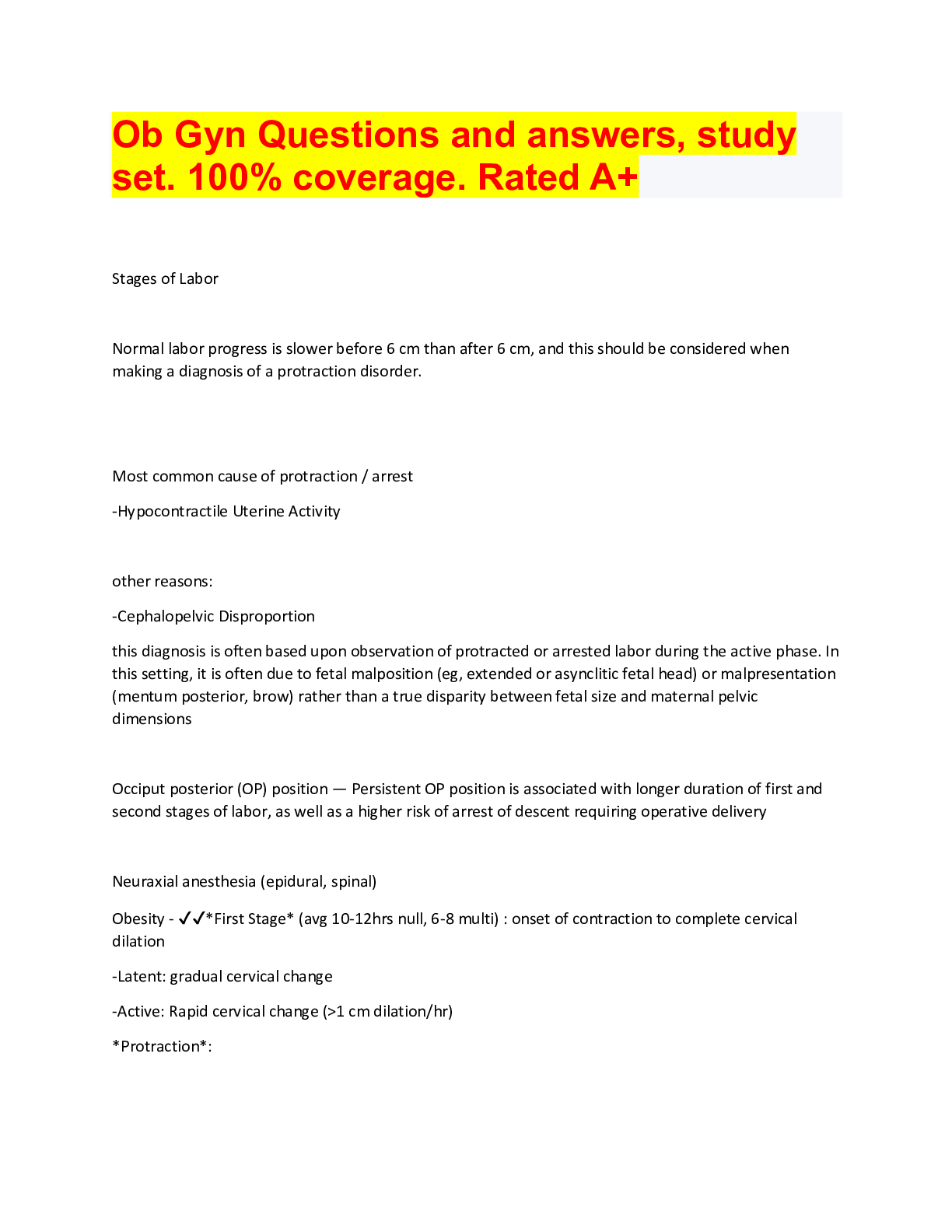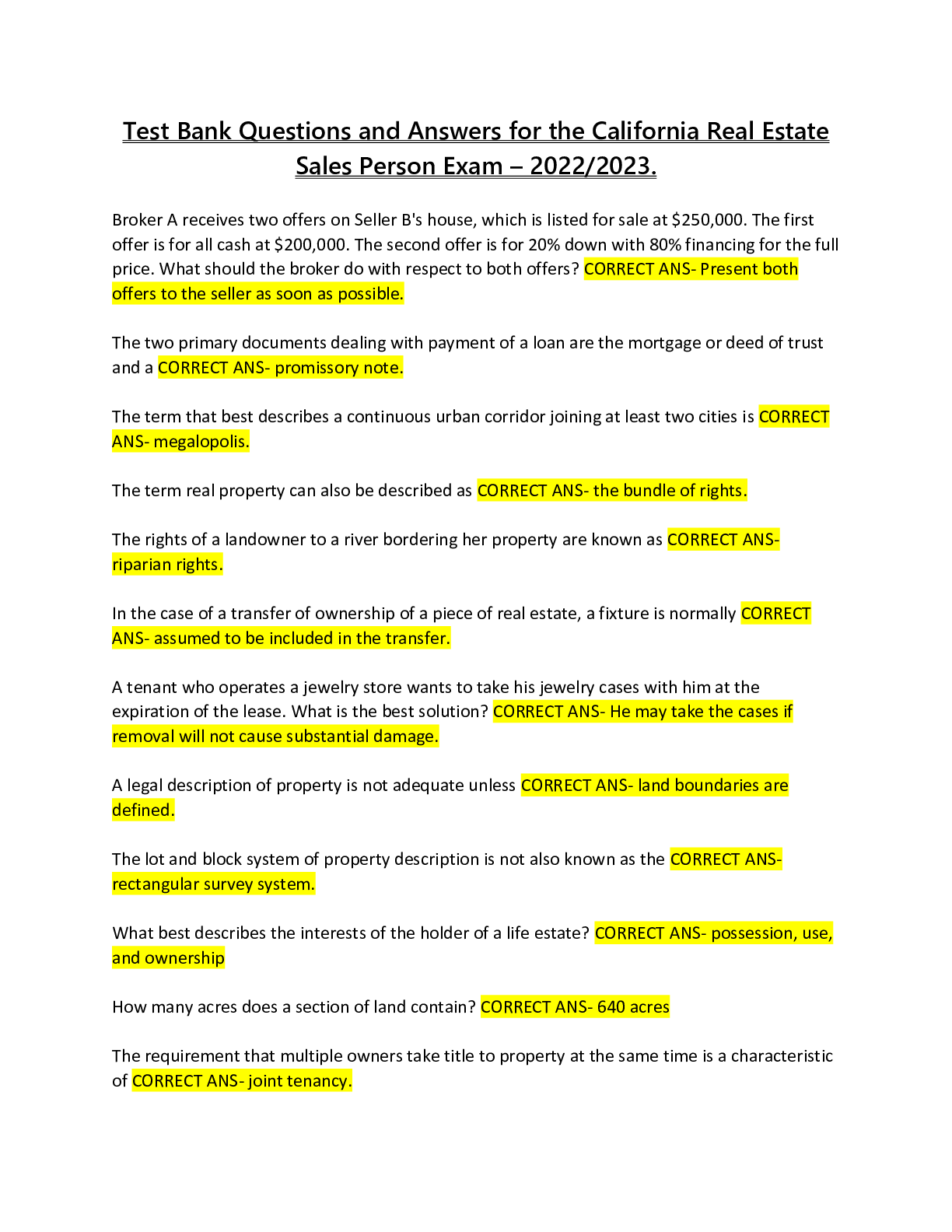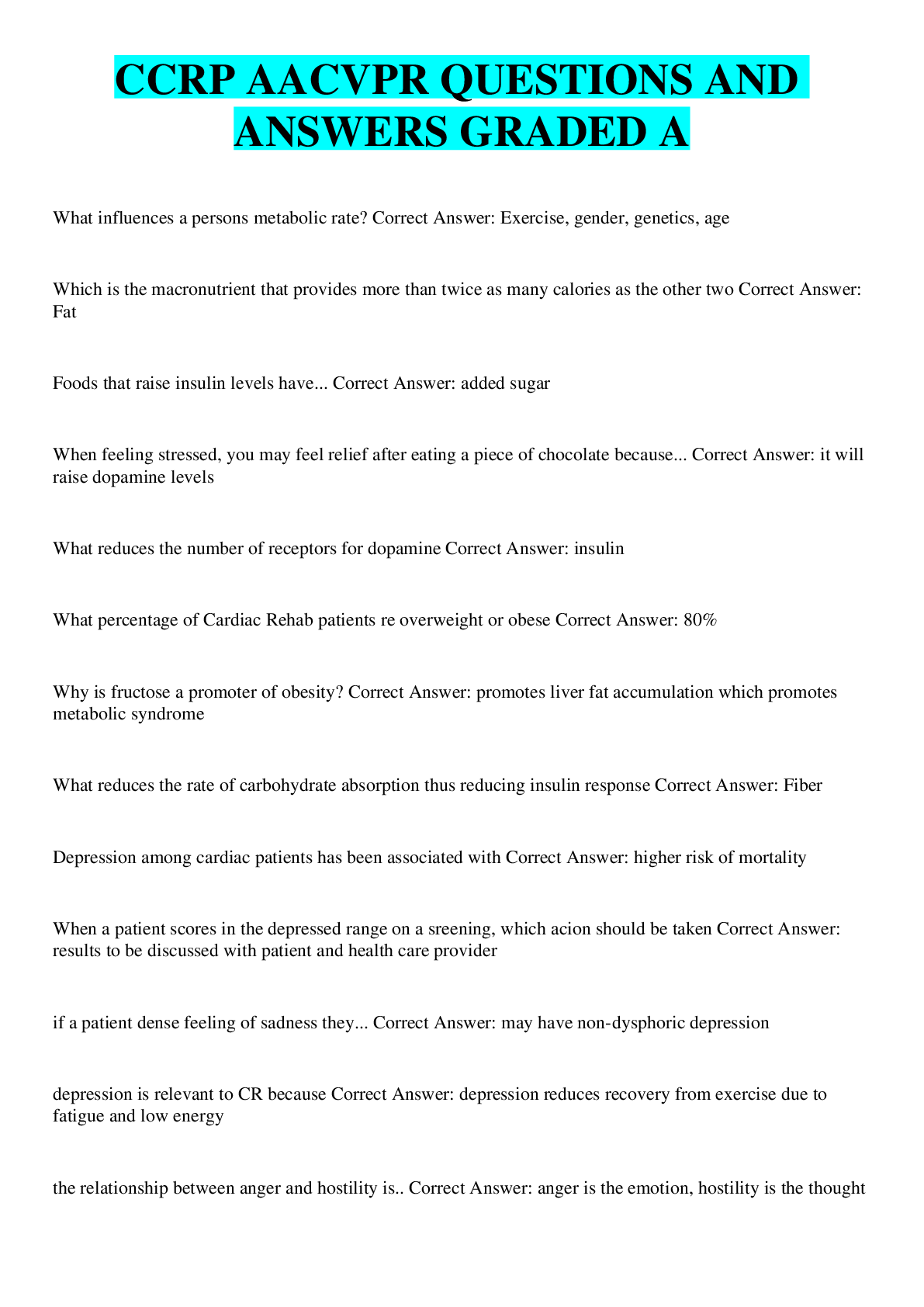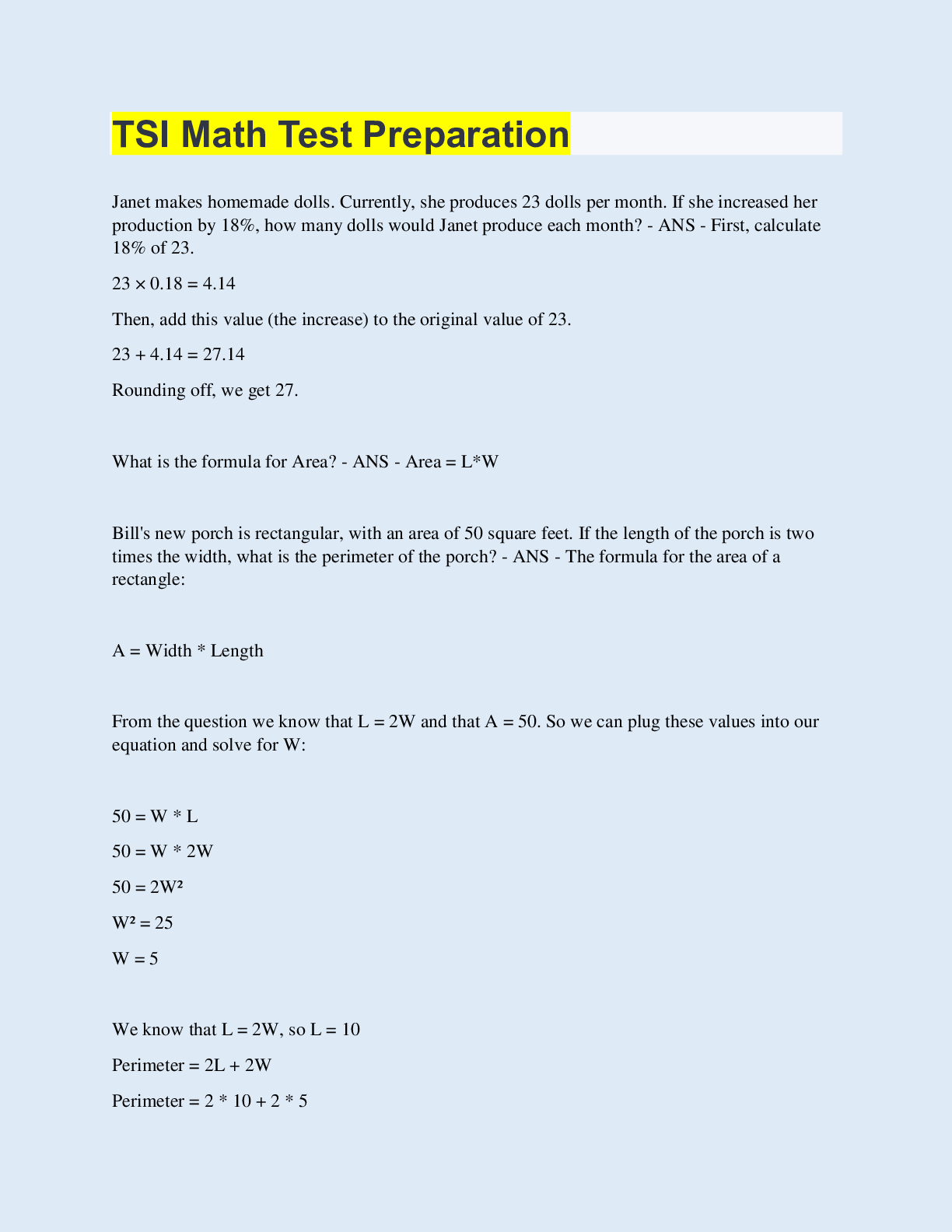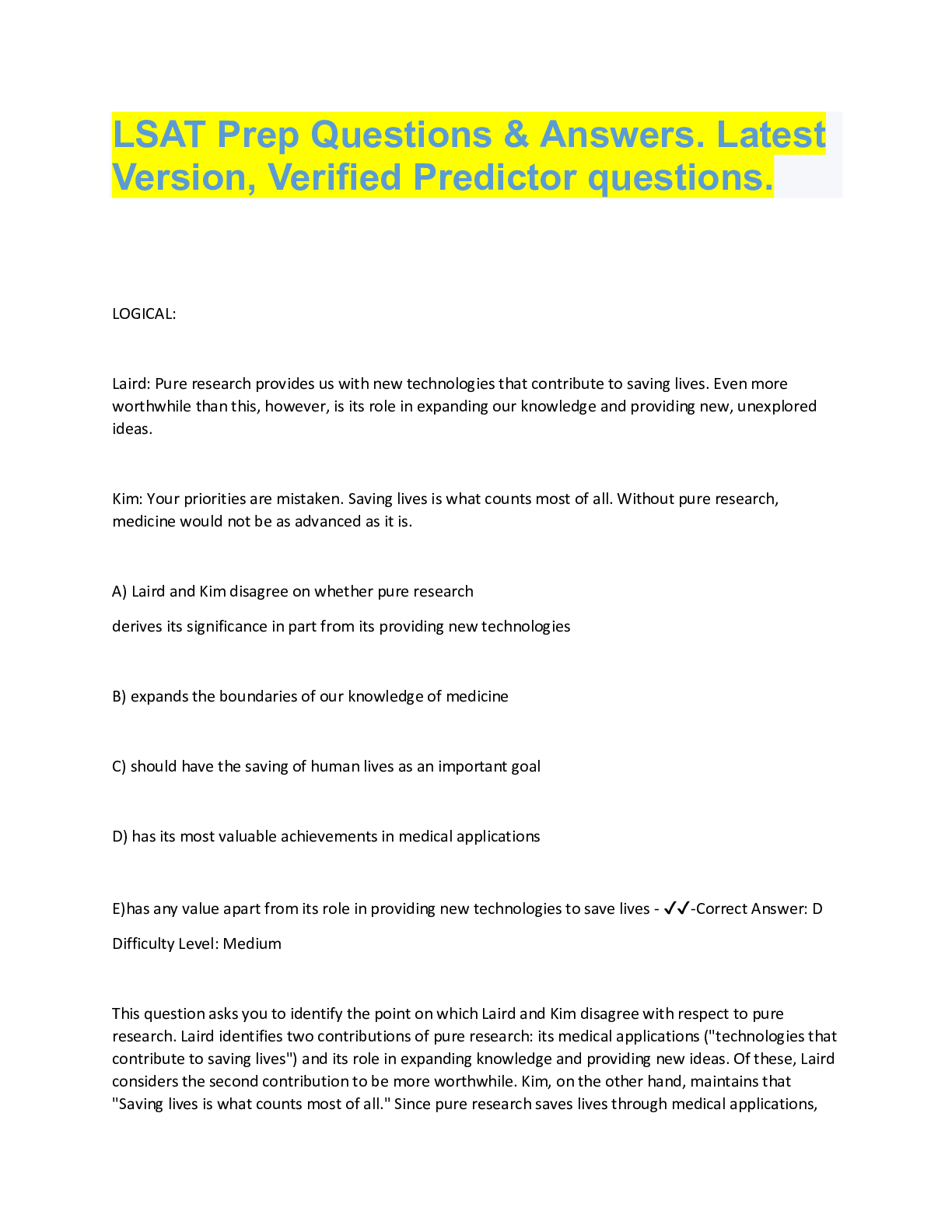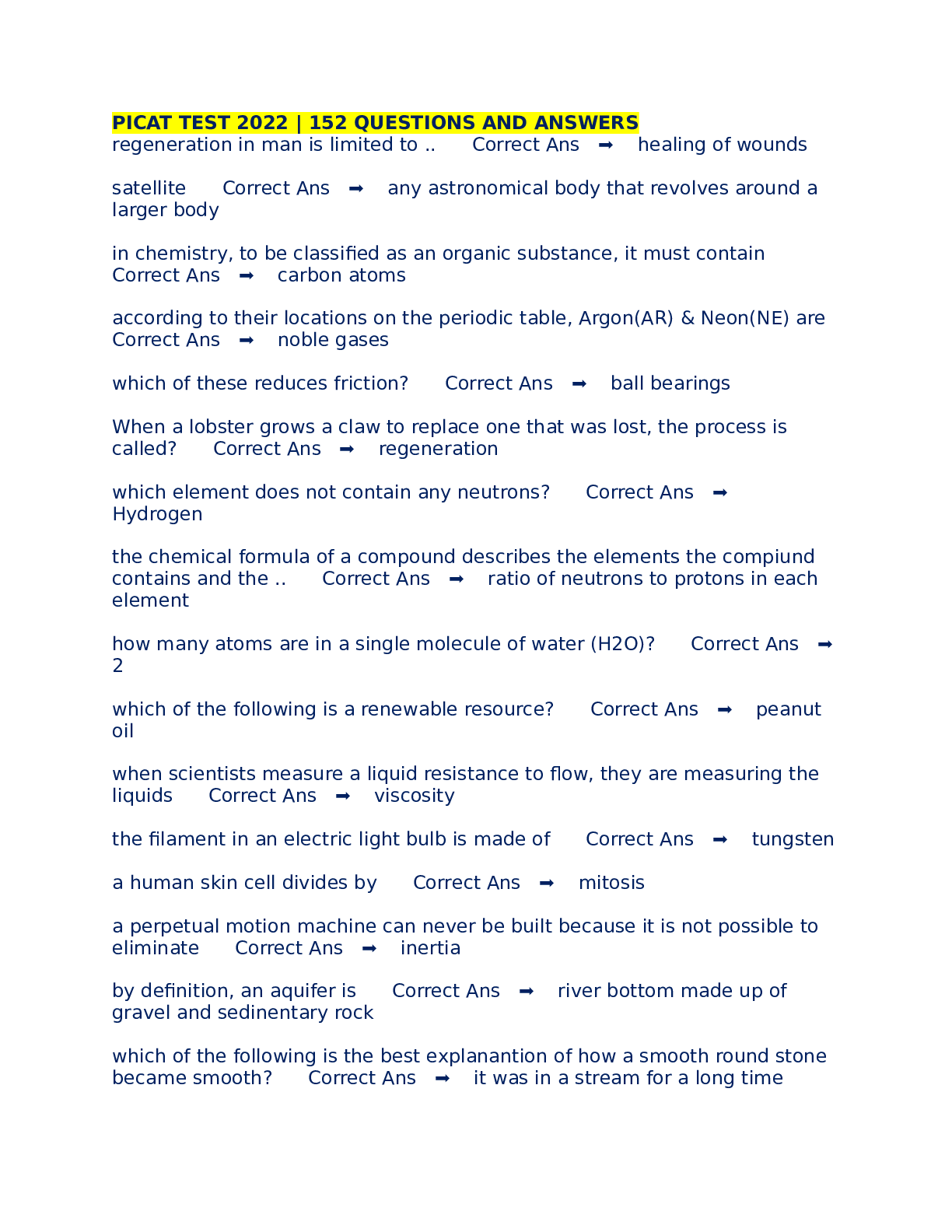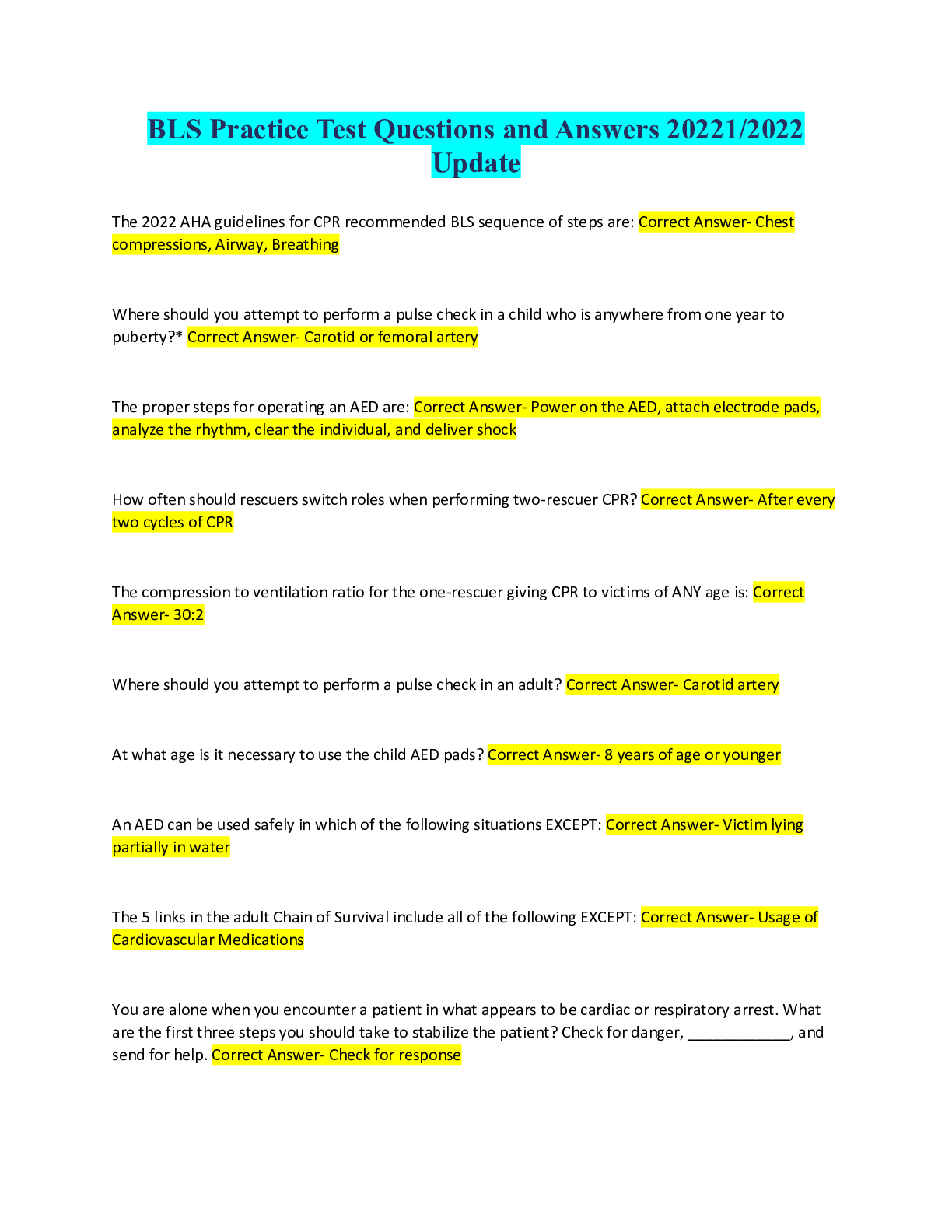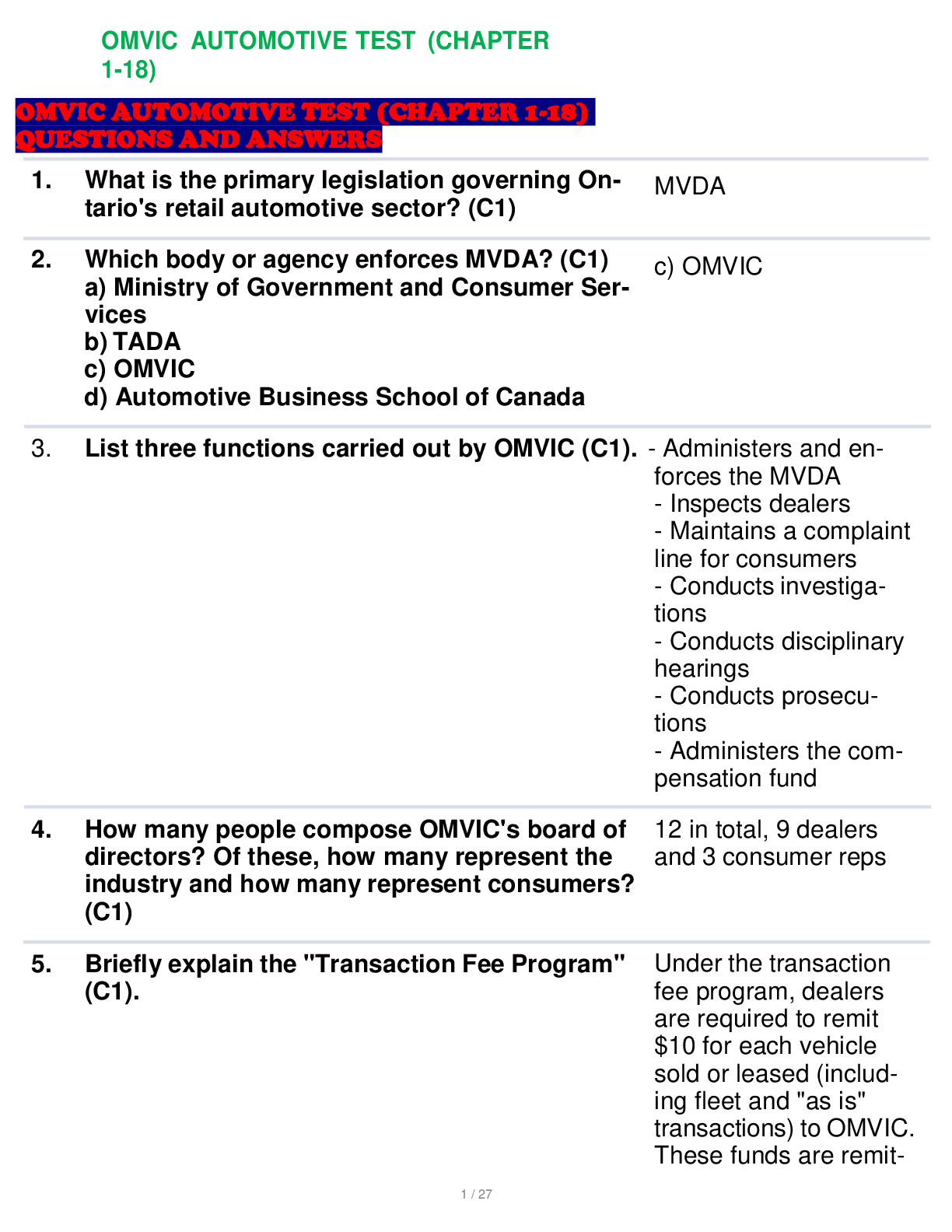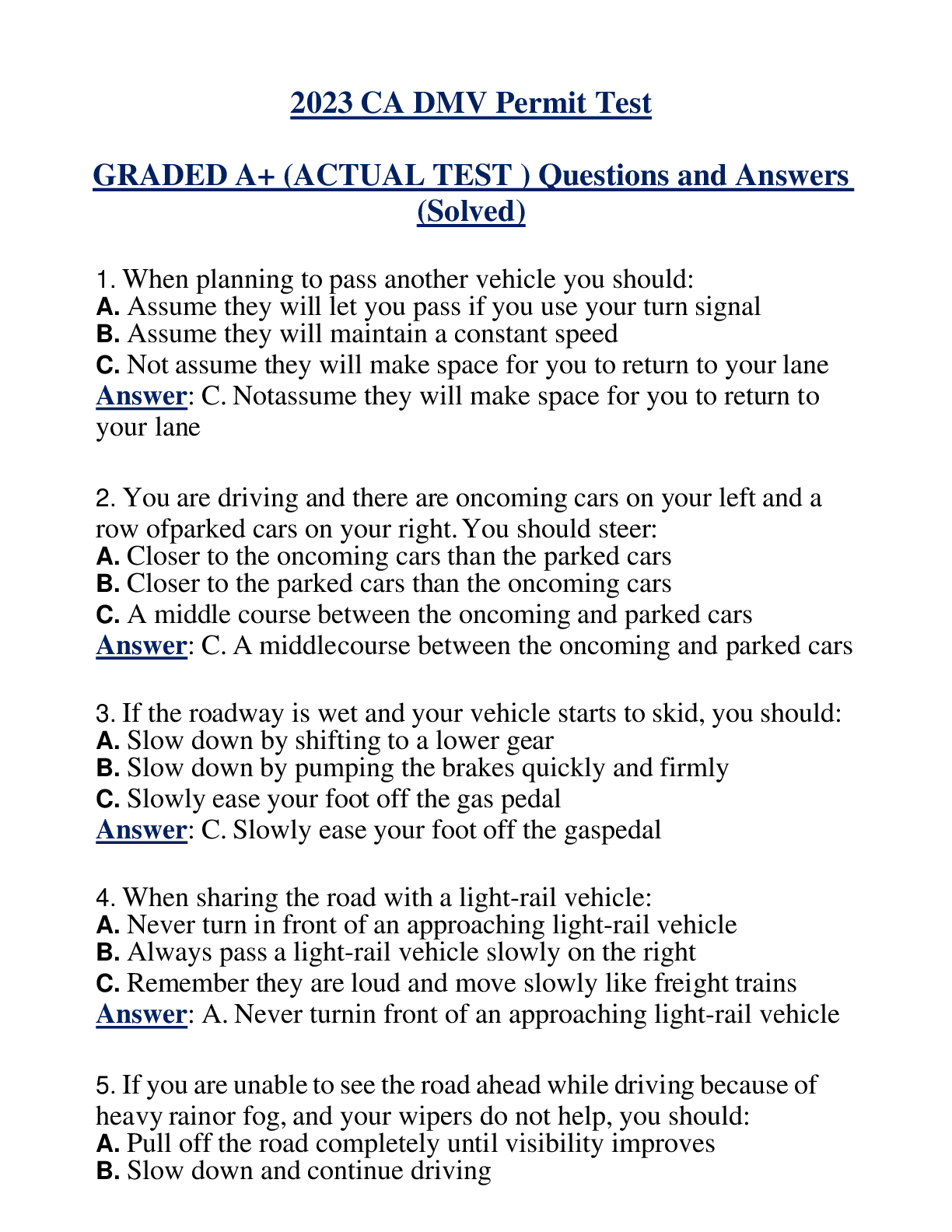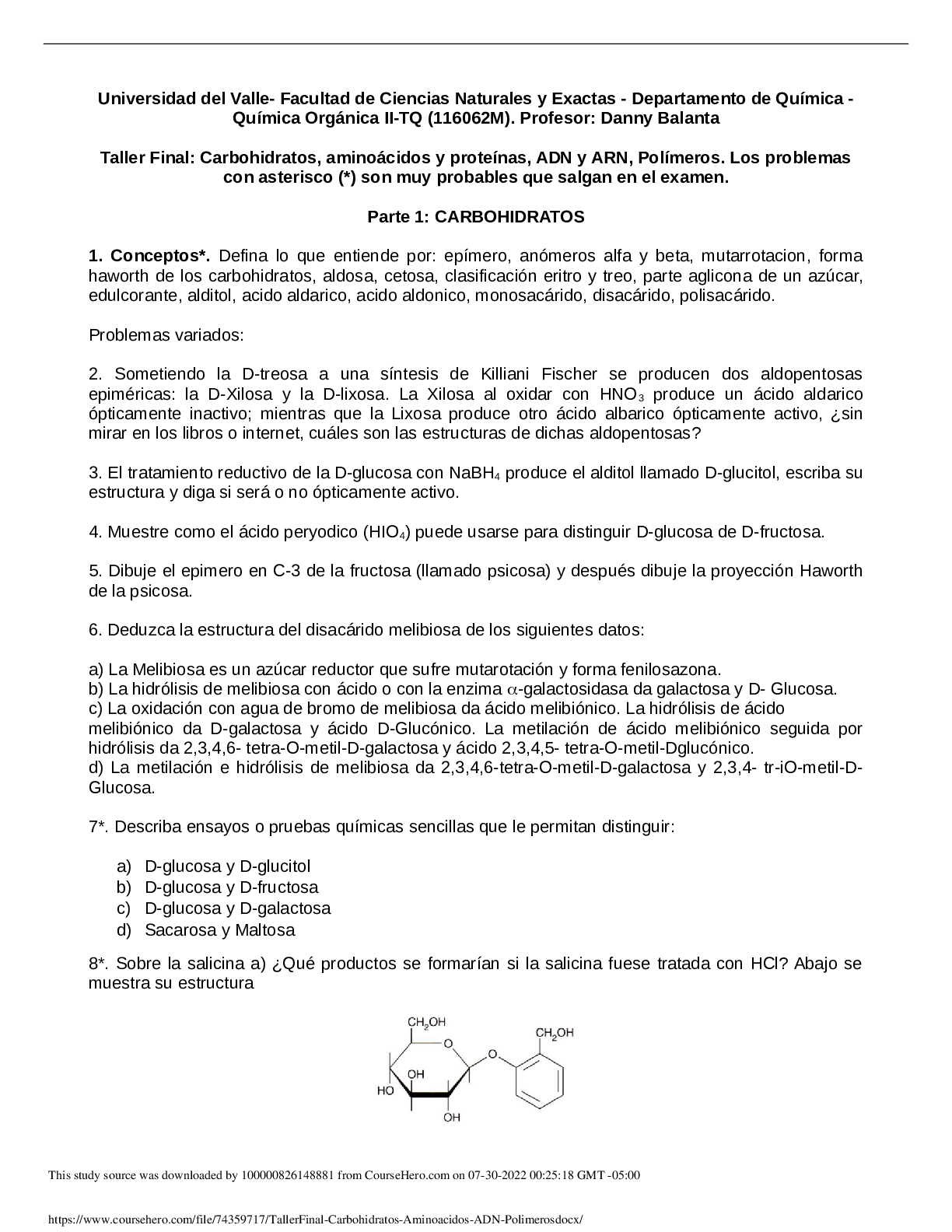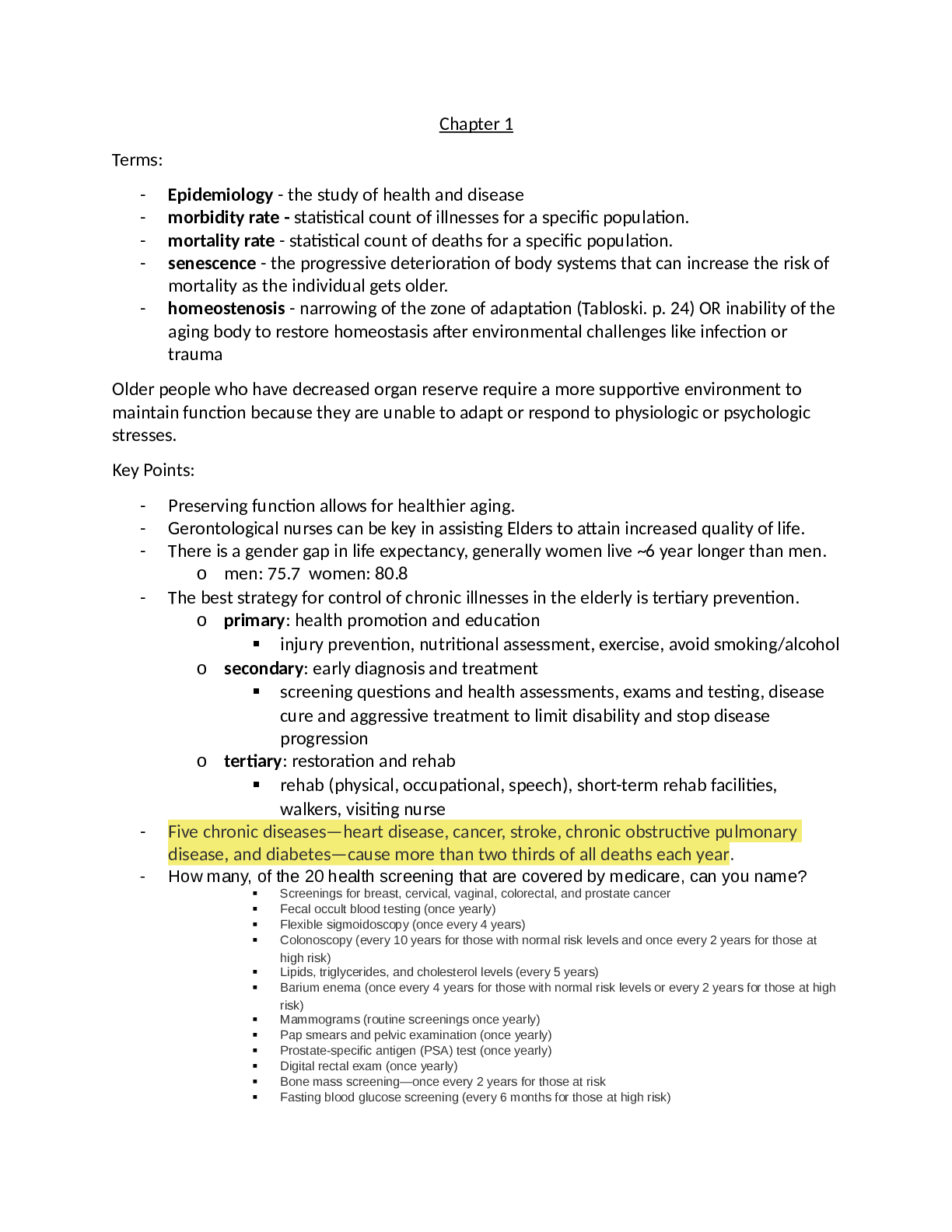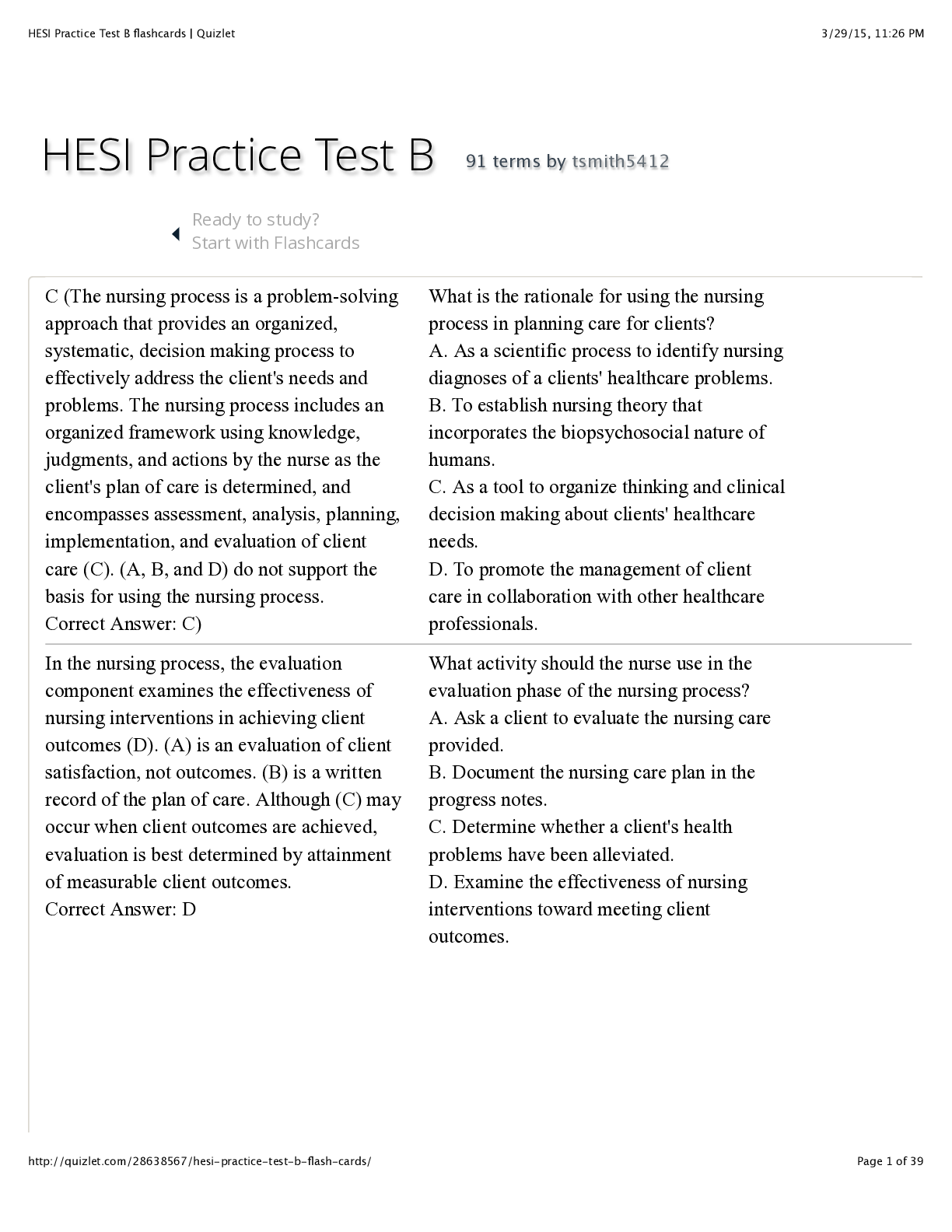Chemistry > Test Prep > TEAS 7 Test Chemistry (All TEAS Test Topics) Questions And Answers Latest Update With Complete (All)
TEAS 7 Test Chemistry (All TEAS Test Topics) Questions And Answers Latest Update With Complete
Document Content and Description Below
Cohesion Cohesion is the tendency of particles of the same kind to stick to each other and is an important property to consider when looking at states of matter. This image describes the var... ious phase changes and how it either absorbs or releases energy. Please see chart. TEAs 7 Online Course www.SmartEditionAcademy.com What phase changes require energy to be added to the system because the substance has more energy at the end of the phase change? The phase changes are melting, vaporization (boiling), and sublimation. What phase changes require energy to be released to the system because the substance has more energy at the end of the phase change? These phase changes are freezing, condensation, and deposition. Matter Matter is anything that takes up space and has mass. A golf ball contains more matter than a table-tennis ball. The golf ball has more mass. The amount of matter that an object contains is its mass. Mass Matter is anything that takes up space and has mass. A golf ball contains more matter than a table-tennis ball. The golf ball has more mass. The amount of matter that an object contains is its mass. substance A substance is matter that has a uniform and definite composition. Lemonade is not a substance because not all pitchers of lemonade are identical. physical property A physical property is a quality or condition of a substance that can be observed or measured without changing the substance’s composition. chemical property Chemical properties are observed only when a substance undergoes a change in composition, which is a chemical change. extensive properties extensive properties do depend on the amount of a sample that is present. A good example of the difference between the two types of properties is that mass and volume are extensive properties, but their ratio (density) is an intensive property. Notice that mass and volume deal with amounts, whereas density is a physical property. Intensive properties Intensive properties do not depend on the amount of matter that is present. Intensive properties do not change according to the conditions. They are used to identify samples because their characteristics do not depend on the size of the sample. Deposition Deposition is a gas changing into a solid without going through the liquid phase. It is an uncommon phase change. Melting Melting is the change of a solid into a liquid. Sublimation Sublimation is a solid changing into a gas. As a material sublimates, it does not pass through the liquid state. An example of sublimation is carbon dioxide, a gas, changing into dry ice, a solid. polar molecule Water is considered a polar molecule, a molecule where one end is slightly negative and the other end is slightly positive valence electrons Valence electrons, which are found in an atom’s outermost energy level, are involved in forming chemical bonds. The periodic table below shows the Bohr models of select elements. The valence electrons appear in red. Ionic compounds Ionic compounds are formed when electrons are transferred from a metal (which loses one or more electrons) to a nonmetal (which gains one or more electrons). Covalent compounds Covalent compounds are formed when two nonmetals or metalloids share electrons. shared electrons Covalent compounds can be modeled in Lewis structures. Lewis structures for methane, ammonia, and water are shown below. In a Lewis structure, covalent bonds, also called shared electrons, are represented by lines between two atoms. single covalent bonds In methane, ammonia, and water, atoms are joined by single covalent bonds in which the atoms share two electrons. triple bond Two nitrogen atoms form a molecule with a triple bond, in which three pairs of electrons (six electrons total) are shared. [Show More]
Last updated: 1 year ago
Preview 1 out of 4 pages
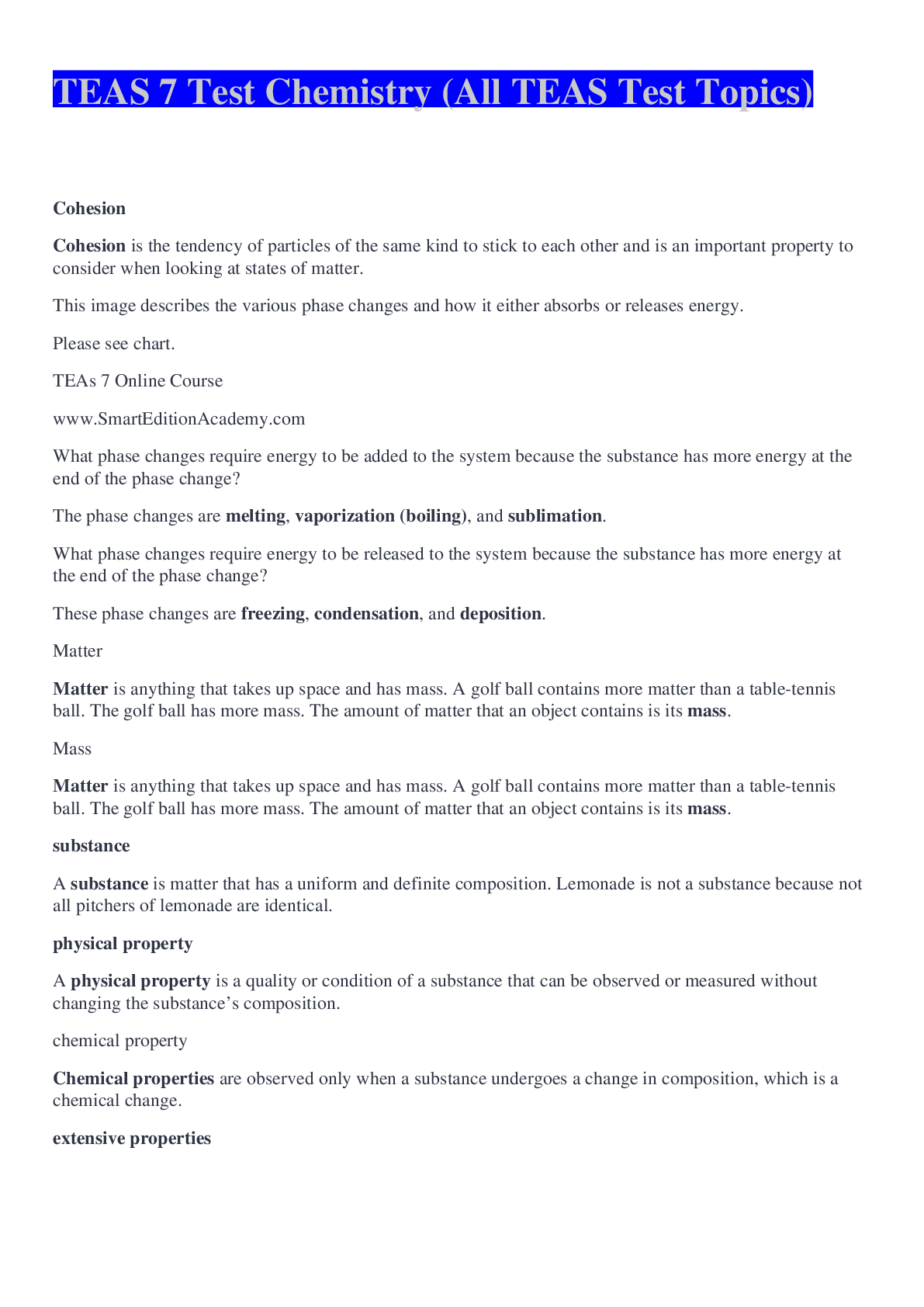
Reviews( 0 )
Document information
Connected school, study & course
About the document
Uploaded On
Nov 08, 2022
Number of pages
4
Written in
Additional information
This document has been written for:
Uploaded
Nov 08, 2022
Downloads
0
Views
90


